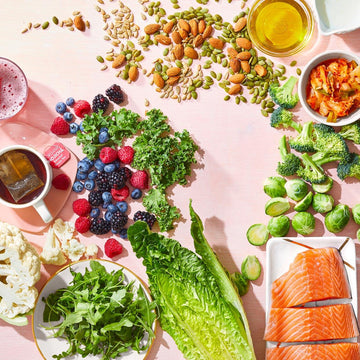How many meals make for optimal health?
When it comes to our health & wellness, it is important to understand the fundamental differences between 3 structured meals a day versus grazing throughout the day on 5 – 6 smaller meals.
5 – 6 meals:
People fail in optimizing their meals for a variety of reasons including but not limited to; Inconsistency of meal preparation, poor habits/ practices, lack of education, or even simply complacency. These reasons can cause us to toil through our days aimlessly, unprepared to make healthy choices. Lack of planning will also means you are spending more time making unnecessary food decisions, thereby wasting brain power and inevitably over eating.
When our stomach is constantly digesting food, we are not allowing ourselves proper energy to rest, restore and repair within the body.
It is said that 5 – 6 meals can help to keep blood sugars balanced however I find that information to be incomplete or misleading to an extent. The same desired effect of a controlled blood sugar level can be achieved with the correct foods and 3 meals. Frequent meals (especially if they are not the right foods) mislead your body by always having a constant supply of energy. This prevents the body from optimally utilizing the energy already stored which ultimately means less fat being burned.
Consistently supplying the body with food will have a detrimental toll on how the body naturally produces and uses insulin. Insulin is your body’s fat-storage hormone! Every time you eat, insulin is released. It acts as a shuttle transporting sugars from the bloodstream to your cells in your liver and muscle for storage. With that said, we can only store so much. The leftover sugars are repackaged into a triglyceride and fat. Additionally, consistently elevated levels of insulin can block the production of many of the hormones that protect your body from things such as inflammation and aging.

On the other hand, when you plan and prep 3 healthy meals daily that are; well-balanced and low glycemic (fats/carbs/protein), you will not experience decision fatigue, make poor food choices, or experience true hunger between meals. (Physical hunger vs mental hunger). Instead you will feel satisfied between meals and thus not over eating or spike insulin levels.
Body cells store upwards of 400 g of glucose (1600 kcal), used immediately in times of hunger. This is enough ‘energy’ for a whole day without actually eating a meal. Additionally, the body stores fat reserves in excess of 9000 kcal per 2.2 lbs of fat – enough energy to sustain the human body for an entire week.
Eating properly helps your body to effectively burn fat, reducing your risk of excessive unhealthy weight gain, obesity or insulin sensitivity. Insulin sensitivity will in turn lead to insulin resistance and ultimately diet and lifestyle diabetes. Insulin function is often an underlying factor associated with a multitude of other chronic health conditions.
Three properly structured meals will help to diminish “late night snacking”. This lends well to the extended hours of the night where insulin levels drop very low, allowing for fat to be burned more easily.

Important benefits of balancing your Insulin levels:
- Adrenalin, Cortisone, Cholesterol and Triglycerides decrease.
- Lipid catabolism (breakdown), DHEA, Melatonin and HGH (Human Growth Hormone) increase.
- Physiological & Psychological well-being also increase.
Apart from what happens within the body with regards to your hormones, scientific evidence shows that when you have 3 well-timed/structured meals, that spatiotemporal variability aka time-place learning increases.
Timing or structure of 3 meals translates in our bodies as having a routine or habit. Thus generate increases in productivity, predictability as well as increased efficiency in fundamental skills such as time-management as well as overall brainpower in decision making.
Routines inspire people but they also generate stability. Not just in day-to-day life, but within ourselves as well. Body function, hormone signalling, digestion and metabolism.
The table below provides some ideas on what three balanced meals per day structure could look like:

BREAKFAST
|

LUNCH
|

DINNER
|
Cara Janzen, H. BSc. RHN is an AURA Community member with a belief to help make you rich – nutritionally! As a Registered Holistic Nutritionist, she is equipped with a B.Sc. and have a background in Biological Sciences and Psychology.







